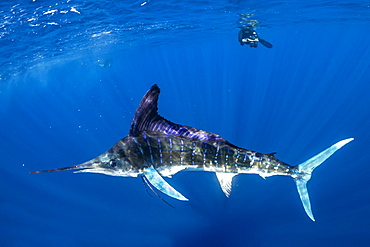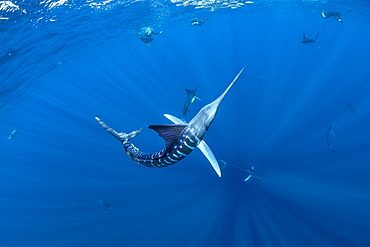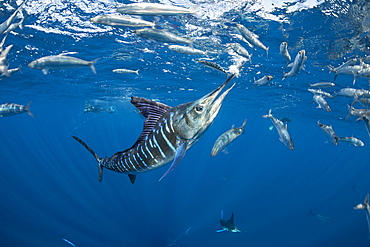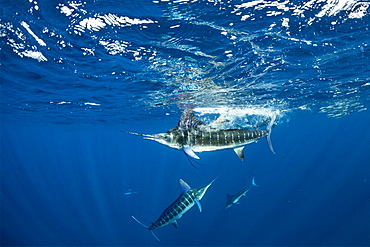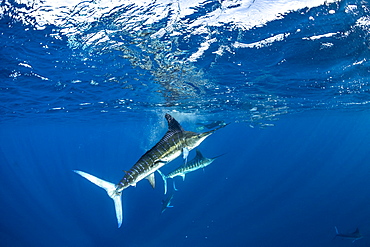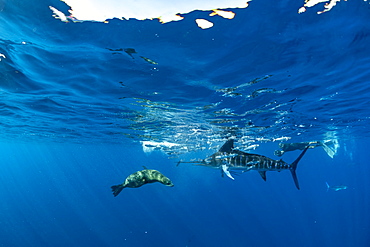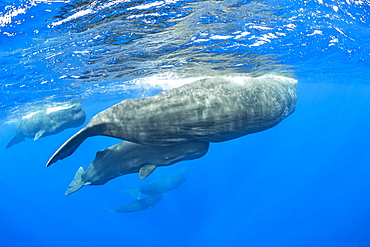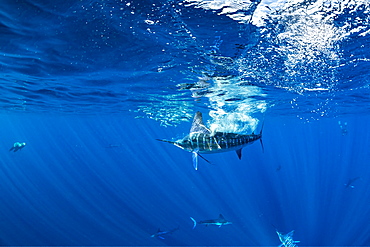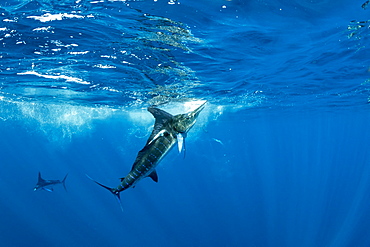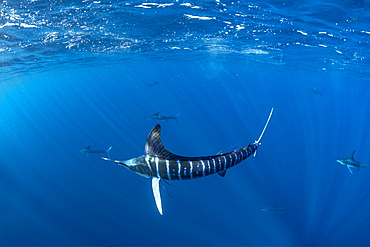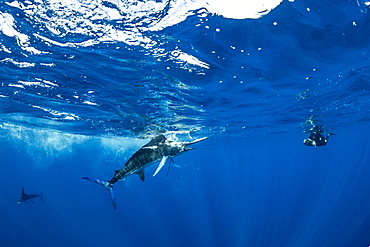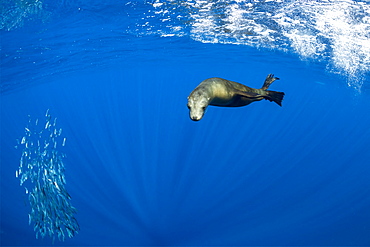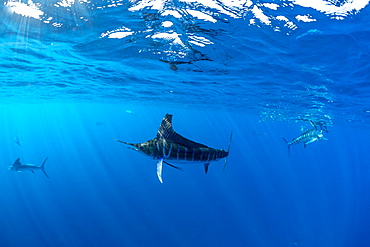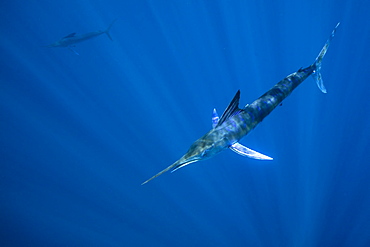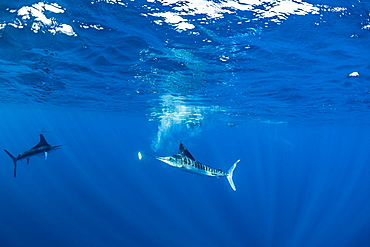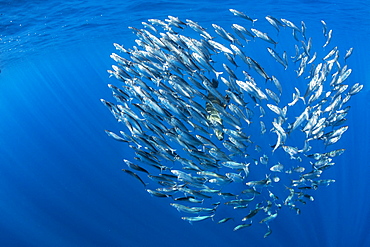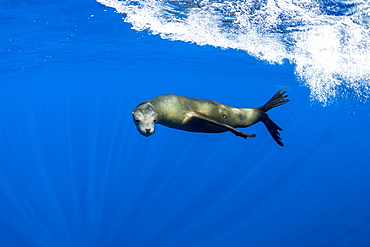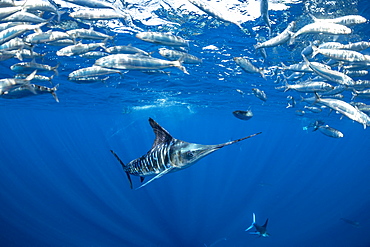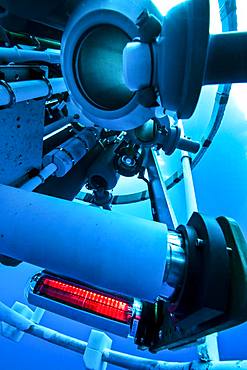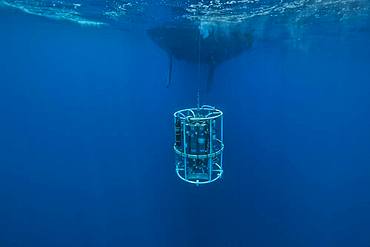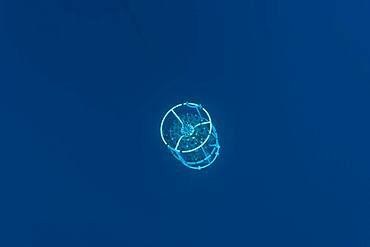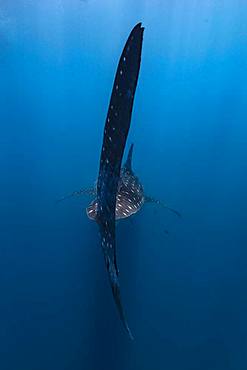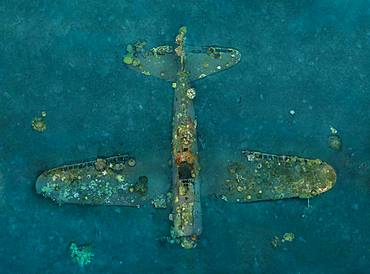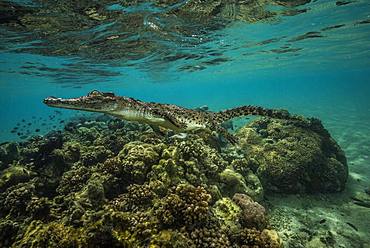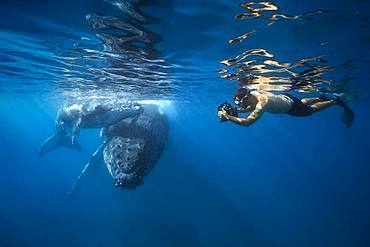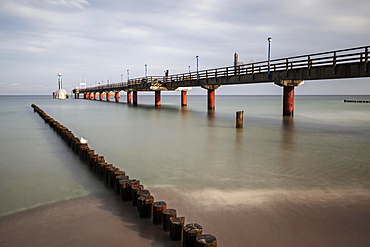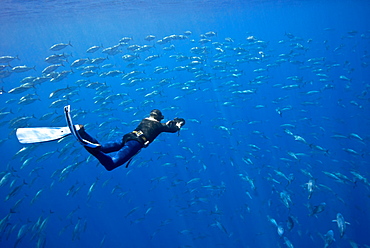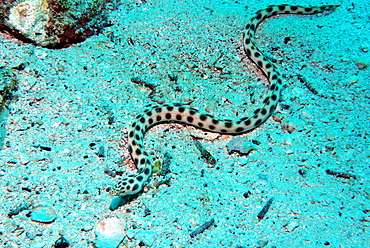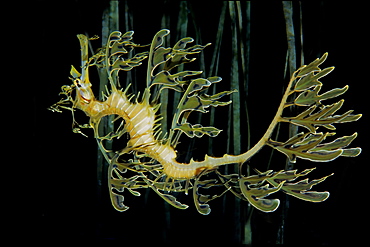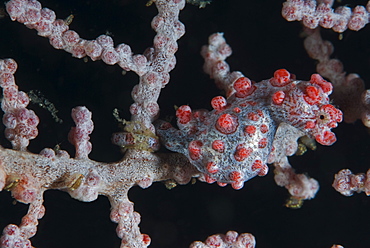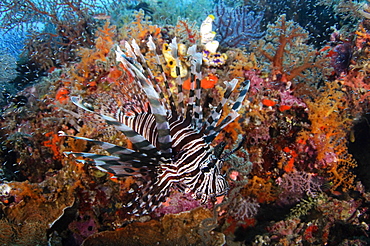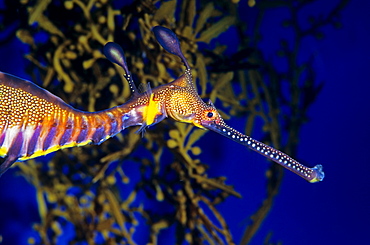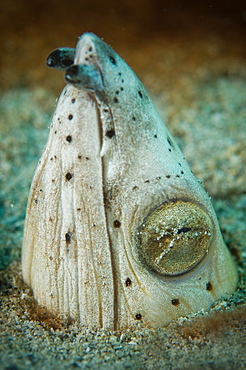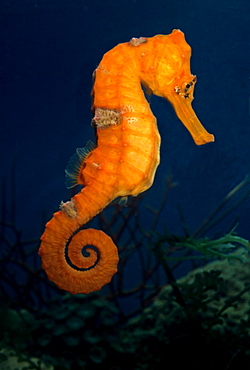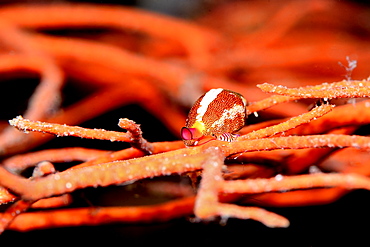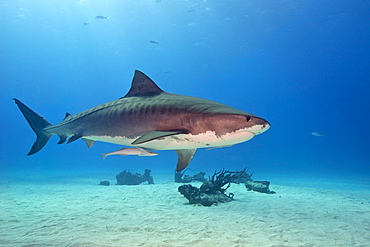Recent searches
Loading...
860-287889 - Free diver photographing Striped marlin (Tetrapturus audax) feeding on sardine's bait ball (Sardinops sagax), Magdalena Bay, West Coast of Baja California, Pacific Ocean, Mexico
860-287883 - Striped marlin (Tetrapturus audax) feeding on sardine's bait ball (Sardinops sagax), Magdalena Bay, West Coast of Baja California, Pacific Ocean, Mexico
860-287901 - Couple of sperm whale, (Physeter macrocephalus), Vulnerable (IUCN), The sperm whale is the largest of the toothed whales. Sperm whales are known to dive as deep as 1,000 meters in search of squid to eat. Image has been shot in Dominica, Caribbean Sea, Atlantic Ocean. Photo taken under permit n°RP 16-02/32 FIS-5.
860-287884 - Striped marlin (Tetrapturus audax) feeding on sardine's bait ball (Sardinops sagax), Magdalena Bay, West Coast of Baja California, Pacific Ocean, Mexico
860-287896 - Striped marlin (Tetrapturus audax) feeding on sardine's bait ball (Sardinops sagax), Magdalena Bay, West Coast of Baja California, Pacific Ocean, Mexico
860-287895 - Striped marlin (Tetrapturus audax) feeding on sardine's bait ball (Sardinops sagax), Magdalena Bay, West Coast of Baja California, Pacific Ocean, Mexico
860-287885 - California Sea Lion (Zalophus californianus) and Striped marlin (Tetrapturus audax) feeding on sardine's bait ball (Sardinops sagax), Magdalena Bay, West Coast of Baja California, Pacific Ocean, Mexico
860-287897 - Pod of sperm whale with mother and calf, (Physeter macrocephalus), Vulnerable (IUCN), The sperm whale is the largest of the toothed whales. Sperm whales are known to dive as deep as 1,000 meters in search of squid to eat. Image has been shot in Dominica, Caribbean Sea, Atlantic Ocean. Photo taken under permit n°RP 16-02/32 FIS-5.
860-287886 - Striped marlin (Tetrapturus audax) feeding on sardine's bait ball (Sardinops sagax), Magdalena Bay, West Coast of Baja California, Pacific Ocean, Mexico
860-287893 - Free diver photographing Striped marlin (Tetrapturus audax) that he has just taken a sardine from a bait ball (Sardinops sagax), Magdalena Bay, West Coast of Baja California, Pacific Ocean, Mexico
860-287891 - Striped marlin (Tetrapturus audax) feeding on sardine's bait ball (Sardinops sagax), Magdalena Bay, West Coast of Baja California, Pacific Ocean, Mexico
860-287916 - A floating, abandoned net in the ocean, Dominica, Caribbean Sea, Atlantic Ocean.
860-287892 - Striped marlin (Tetrapturus audax) feeding on sardine's bait ball (Sardinops sagax), Magdalena Bay, West Coast of Baja California, Pacific Ocean, Mexico
860-287912 - Snorkeler photographing a pod of Sleeping sperm whale (Physeter macrocephalus) Researchers first saw this unusual sleep behavior in sperm whales in 2008. The scientists in that study found that sperm whales dozed in this upright drifting posture for about 10 to 15 minutes at a time, Vulnerable (IUCN). The sperm whale is the largest of the toothed whales. Sperm whales are known to dive as deep as 1,000 meters in search of squid to eat. Dominica, Caribbean Sea, Atlantic Ocean. Photo taken under permit n°RP 16-02/32 FIS-5.
860-287894 - Free diver photographing Striped marlin (Tetrapturus audax) that he has just taken a sardine from a bait ball (Sardinops sagax), Magdalena Bay, West Coast of Baja California, Pacific Ocean, Mexico
860-287867 - California Sea Lion (Zalophus californianus) feeding on sardine's bait ball (Sardinops sagax), Magdalena Bay, West Coast of Baja California, Pacific Ocean, Mexico
860-287878 - Striped marlin (Tetrapturus audax) feeding on sardine's bait ball (Sardinops sagax), Magdalena Bay, West Coast of Baja California, Pacific Ocean, Mexico
860-287858 - Striped marlin (Tetrapturus audax) feeding on sardine's bait ball (Sardinops sagax), Magdalena Bay, West Coast of Baja California, Pacific Ocean, Mexico
860-287865 - Striped marlin (Tetrapturus audax) feeding on sardine's bait ball (Sardinops sagax), Magdalena Bay, West Coast of Baja California, Pacific Ocean, Mexico
860-287881 - Striped marlin (Tetrapturus audax) that he has just taken a sardine from a bait ball (Sardinops sagax), Magdalena Bay, West Coast of Baja California, Pacific Ocean, Mexico
860-287869 - Striped marlin (Tetrapturus audax) feeding on sardine's bait ball (Sardinops sagax), Magdalena Bay, West Coast of Baja California, Pacific Ocean, Mexico
860-287866 - Sardine's bait ball (Sardinops sagax), Magdalena Bay, West Coast of Baja California, Pacific Ocean, Mexico
860-287857 - Striped marlin (Tetrapturus audax) feeding on sardine's bait ball (Sardinops sagax), Magdalena Bay, West Coast of Baja California, Pacific Ocean, Mexico
860-287868 - California Sea Lion (Zalophus californianus) feeding on sardine's bait ball (Sardinops sagax), Magdalena Bay, West Coast of Baja California, Pacific Ocean, Mexico
860-287876 - Striped marlin (Tetrapturus audax) feeding on sardine's bait ball (Sardinops sagax), Magdalena Bay, West Coast of Baja California, Pacific Ocean, Mexico
860-287877 - Striped marlin (Tetrapturus audax) feeding on sardine's bait ball (Sardinops sagax), Magdalena Bay, West Coast of Baja California, Pacific Ocean, Mexico
860-287880 - Striped marlin (Tetrapturus audax) feeding on sardine's bait ball (Sardinops sagax), Magdalena Bay, West Coast of Baja California, Pacific Ocean, Mexico
860-287773 - Dactylospongia metachromia, Rangiroa, French Polynesia
860-287564 - Imperial Shrimp (Periclimenes imperator) on a blue sea cucumber (Actinopyga caerulea) 76 meters deep, Mayotte
860-287453 - Tara Oceans Expeditions - May 2011. CTD-Rosette (Conductivity Temperature Density instrumental platform with 7 additional sensors), Galapagos
860-287454 - Tara Oceans Expeditions - May 2011. CTD-Rosette (Conductivity Temperature Density instrumental platform with 7 additional sensors), galapagos
860-287442 - Tara Pacific expedition - november 2017 Kimbe Bay, papua New Guinea, Zero wreck: Coral growth on this wreck is from a period of 74 years ! D: 15 m The ZERO, is a Japanese WW2 fighter plane wreck. This Zero wreck was discovered in January 2000 by local William Nuli while he was freediving for sea cucumbers. He asked the Walindi Plantation Resort dive team if they might know what it was, and when they investigated they uncovered the intact wreck of a Zero fighter, resting on a sedimented bottom in 15 m depth. This World War II Japanese fighter is almost completely intact. The plane is believed to have been ditched, the pilot is believed to have survived, but was never found on the island. He never returned home. Maybe he disappeared in the jungle? On 26th December 1943, during the battle of Cape Gloucester, the Japanese pilot made an emergency landing, ditching his Mitsubishi A6M Zero plane into the sea approximately 100m off West New Britain Province. The plane was piloted by PO1 Tomiharu Honda of the 204st K?k?tai. His fate is unknown but it is believed the he made a controlled water landing after running out of fuel and survived. Although he failed to return to his unit, the plane was found with the throttle and trim controls both set for landing and the canopy was open. There are no visible bullet holes or other shrapnel damage and the plane is still virtually intact after over 70 years underwater. It is a A6M2 Model 21 Zero, made famous for its use in Kamikaze attacks by the Japanese Imperial Navy. The wreck has the Manufacture Number 8224 and was built by Nakajima in late August 1942.
860-287459 - Tara Oceans Expeditions - May 2011. diving Marine Iguana (Amblyrhynchus cristatus); Isabela Island; Galapagos, Ecuador; The Marine Iguana appears slow and clumsy on land, but this particular species of lizard is the only sea-going lizard in the world. However, it has to return the the land to breed.
860-287451 - Tara Oceans Expeditions - May 2011. Surface plancton nets, deployed from Tara, Galapagos
860-287560 - A necessary alliance, a symbiosis even between this moray eel (Gymnothorax javanicus) and this cleaning shrimp (Lysmata amboinensis). Depth: 65m, Mayotte
860-287455 - Tara Oceans Expeditions - May 2011. CTD-Rosette (Conductivity Temperature Density instrumental platform with 7 additional sensors), Galapagos
860-287561 - Life is abundant in the Sada pass of the Mayotte lagoon.
860-287563 - An antipatharian whip coral and its goby photographed at a depth of 76 meters. Are these the same specimens found in shallow depths?
860-287558 - Behind the huge caudal fin of a whale shark (Rhincodon typus), Madagascar
860-287456 - Tara Oceans Expeditions - May 2011. CTD-Rosette (Conductivity Temperature Density instrumental platform with 7 additional sensors), Galapagos
860-287562 - A small Red-Spotted Guard Crab (Trapezia tigrina) keeper of the corals of the bateau pass, Mayotte
860-287445 - Tara Pacific expedition - november 2017 Saltwater crocodile exhaling through the nose (bouyancy control) near Garua Island, Kimbe Bay, Papua New Guinea
860-287457 - Tara Oceans Expeditions - May 2011. Bubbles rise from underwater volcanic vents among rocks, the openings are crusted with sulfur, Roca Redonda, Galapagos, Ecuador
860-287449 - Tara Oceans Expeditions - May 2011. Surface plancton nets, deployed from Tara, Galapagos
860-287539 - Dead fan mussel and diver, Mediterranean Sea. Massive mortality of Noble Pen Shell (Pinna nobilis) infected with the parasite Haplosporidium. Porticcio. Corsica. Mediterranean.
860-287440 - Tara Pacific expedition - november 2017 Zero wreck, vertical view Orthomosaic from 3D photogrammetry (13500 x 10000 px). D: 15 m Kimbe Bay, papua New Guinea, Coral growth on this wreck is from a period of 74 years ! The ZERO, is a Japanese WW2 fighter plane wreck. This Zero wreck was discovered in January 2000 by local William Nuli while he was freediving for sea cucumbers. He asked the Walindi Plantation Resort dive team if they might know what it was, and when they investigated they uncovered the intact wreck of a Zero fighter, resting on a sedimented bottom in 15 m depth. This World War II Japanese fighter is almost completely intact. The plane is believed to have been ditched, the pilot is believed to have survived, but was never found on the island. He never returned home. Maybe he disappeared in the jungle? On 26th December 1943, during the battle of Cape Gloucester, the Japanese pilot made an emergency landing, ditching his Mitsubishi A6M Zero plane into the sea approximately 100m off West New Britain Province. The plane was piloted by PO1 Tomiharu Honda of the 204st K?k?tai. His fate is unknown but it is believed the he made a controlled water landing after running out of fuel and survived. Although he failed to return to his unit, the plane was found with the throttle and trim controls both set for landing and the canopy was open. There are no visible bullet holes or other shrapnel damage and the plane is still virtually intact after over 70 years underwater. It is a A6M2 Model 21 Zero, made famous for its use in Kamikaze attacks by the Japanese Imperial Navy. The wreck has the Manufacture Number 8224 and was built by Nakajima in late August 1942.
860-287565 - Couple of Imperial Shrimp (Periclimenes imperator) on a blue sea cucumber (Actinopyga caerulea) 76 meters deep, Mayotte
860-287443 - Tara Pacific expedition - november 2017 Saltwater crocodile (Crocodylus porosus) on a small reef, near Garua Island, Kimbe Bay, Papua New Guinea,
860-287458 - Tara Oceans Expeditions - May 2011. Galápagos sea lion (Zalophus wollebaeki), Roca Redonda, Galapagos, Ecuador
860-287247 - Whale shark (Rhincodon typus) in daylight, Nosy Be, Madagascar
860-287413 - Humpback Whale (Megaptera novaeangliae) carrying her calf to the surface, Mayotte
860-287412 - Green turtle (Chelonia mydas) in long exposure. A green turtle swimming on the platier of the beach of N'gouja, in the south of the island of Mayotte.
860-287248 - Whale shark (Rhincodon typus) escorted by a school of bonito, Nosy Be, Madagascar
860-287243 - King Trevally (Gnathanodon speciosus) Opening the way to the Whale Shark (Rhincodon typus) in Nosy Be, Madagascar
860-287245 - Whale shark (Rhincodon typus) under the surface, Nosy Be, Madagascar
860-287242 - Whale shark (Rhincodon typus) swimming with a school of bonito, Nosy Be, Madagascar
860-287085 - Nurse shark (Ginglymostoma cirratum), steal the fish from the diver, Chinchorro Banks (Biosphere Reserve), Quintana Roo, Mexico
860-287059 - Humpback whale (Megaptera novaeangliae) and calf, Tonga Island, Vava'u, Pacific Ocean
860-287084 - Scuba diver hunting the Invasive lionfish, alien species (Pterois volitans) caught to feed the crocodiles, Chinchorro Banks (Biosphere Reserve), Quintana Roo, Mexico
860-287089 - American crocodile (Crocodylus acutus), Chinchorro Banks (Biosphere Reserve), Quintana Roo, Mexico
860-287086 - Free diver taking pictures of an American crocodile (Crocodylus acutus), Chinchorro Banks (Biosphere Reserve), Quintana Roo, Mexico
860-287083 - Scuba diver hunting the Invasive lionfish, alien species (Pterois volitans) caught to feed the crocodiles, Chinchorro Banks (Biosphere Reserve), Quintana Roo, Mexico
860-287060 - Humpback whale (Megaptera novaeangliae) Calf playing with photographer, Tonga Island, Vava'u, Pacific Ocean
860-287088 - Free diver taking pictures of an American crocodile (Crocodylus acutus), Chinchorro Banks (Biosphere Reserve), Quintana Roo, Mexico
860-287058 - Humpback whale (Megaptera novaeangliae) and calf, Tonga Island, Vava'u, Pacific Ocean
860-287087 - American crocodile (Crocodylus acutus), Chinchorro Banks (Biosphere Reserve), Quintana Roo, Mexico
860-287051 - Humpback whale (Megaptera novaeangliae) and its young swimming peacefully in the waters of the Mayotte lagoon.
860-287057 - Humpback whale (Megaptera novaeangliae) Calf playing with photographer, Tonga Island, Vava'u, Pacific Ocean
860-287056 - Humpback whale (Megaptera novaeangliae) and calf, Tonga Island, Vava'u, Pacific Ocean
860-287049 - Humpback whale (Megaptera novaeangliae) and its young resting near the shore in the Mayotte lagoon.
860-287050 - Photographer and humpback whale (Megaptera novaeangliae) with his young in the waters of the Mayotte lagoon.
860-287044 - Blotched fantail ray (Taeniura meyeni) on a detrital background. Lagoon of New Caledonia.
860-287043 - Bear paw Clam (Hippopus hippopus) on detrital background. Rare in some areas of the lagoon due to overfishing. New Caledonia.
860-287036 - Green turtle (Chelonia mydas) feeding on algae. South lagoon. New Caledonia.
860-287037 - Green turtle (Chelonia mydas) swimming in the lagoon. South lagoon. New Caledonia.
832-380562 - Groynes, wooden stages and pier with diving gondola, long time exposure, Zingst, Fischland-Darß-Zingst, Western Pomerania Lagoon Area National Park, Mecklenburg-Western Pomerania, Germany, Europe
860-282371 - Diver and school of young bluefin tuna, Azores
860-285746 - Shore rockling in the reef, Mediterranean Sea
860-286231 - Plumose Anemone, Pacific Ocean Alaska USA
860-284235 - Tiger snake eel on bottom, Galapagos Islands
860-286239 - Plumose Anemones and Urchins, Pacific Ocean Alaska
860-283967 - White-banded Cleaner Shrimp on Grouper, New Caledonia
860-285229 - White-tip reef shark over shallow coral reef, Fiji Islands
860-282721 - Coral hermit crab and Coral polyps, Haapai Tonga
860-286267 - Portrait of Red Irish Lord , Pacific Ocean Alaska
860-286228 - Painted Anemone tentacles, Pacific Ocean Alaska USA
860-283788 - Bigfin reef Squid swimming under surface, Fiji
860-283814 - Clown nudibranch mating, Poor knights Island New Zealand
860-283151 - Pygmy Seahorse- Lembeh Strait Indonesia
860-282505 - Lionfish and Soft Corals, Raja Ampat Indonesia
860-282503 - Porcelain Crab on Soft Coral, Raja Ampat Indonesia
860-283143 - Portrait of Common sea dragon, Aquarium Singapore
860-286276 - Opalescent Nudibranch on Sea Star, Alaska Pacific Ocean
860-285577 - White Simnia on Sea Fan, Mediterranean Spain
860-282952 - Tiger shark swimming above a sandy bottom, Bahamas
